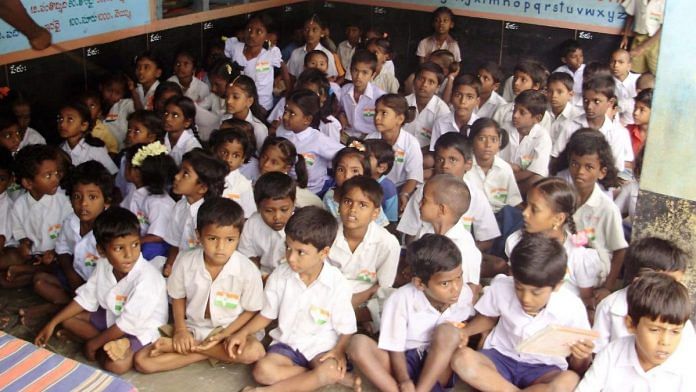Annual ASER report reveals learning abilities among older children lowest in a decade while basic Maths continues to remain a problem across sections.
New Delhi: The learning ability of children at the Class 8 level in rural areas has fallen dramatically, to its lowest in a decade in 2018, findings from the latest Annual Status of Education Report (ASER) reveal.
According to the ASER report, released Tuesday, 85 per cent children could at least read basic text in 2008 but that number has declined to 72.8 per cent in 2018.
When it comes to younger children, those in Class 3, however, learning abilities have shown improvement. The ability to read basic text has improved over the decade, from 22.2 per cent in 2008 to over 27 per cent in 2018.
The children were tested on their ability to read basic sentences in Hindi or other languages, apart from letters and words.
Mathematics remains a problem
When it comes to basic mathematics, however, the problem still exists both at the younger and older level.
Only 28.1 per cent of children at the Class 3 level were able to do basic subtraction in 2018, a fall from 38.8 per cent in 2008.
States such as Punjab, Kerala, Haryana, Maharashtra, Assam, Gujarat and Uttar Pradesh have, however, shown an increase in the level of children able to do basic mathematics. Himachal Pradesh, Andhra Pradesh, Karnataka, Uttarakhand and Bihar have shown a decline.
To test basic mathematics skills, the children were given tasks such as identifying numbers and doing basic subtraction, which a large number of children could not do.
Also read: India’s elite schools are good enough for the rich and famous, but our colleges aren’t
Basic skills
In the 14-16 year age group, there is a gender difference in basic math capability such as calculating time, discount and applying the unitary method.
Across the country, 50.1 per cent of boys in the 14-16 age group could do division while 44.1 per cent girls could do the same.
In ASER 2018, children in the 14-16 age group were given some everyday tasks that involved computation. The survey found that 49.5 per cent of boys could calculate time correctly while 44.5 per cent girls could do so.
The report concluded that helping children acquire reading and basic math skills by the end of Class 2 and beginning of Class 3 will reduce learning gaps in later stages.
Enrolment in private schools
When it comes to school enrolment, there has been a substantial increase in the number of students attending private schools in rural areas in the country over the past 12 years.
From 18.7 per cent rural students attending private schools in 2006, the figure has jumped to 30.9 per cent in 2018. Most of this increase has occurred in Manipur, followed by Meghalaya and Haryana.
At the young age of 3 years, more than 50 per cent of children are going to anganwadis and only 9.9 per cent to private schools in kindergarten (KG).
“Most private schools enrol children in Lower KG or Upper KG rather than directly in Class 1, whereas in most states, government schools enrol children in Class 1,” the report says, adding that these trends are likely to change in the next few years.



